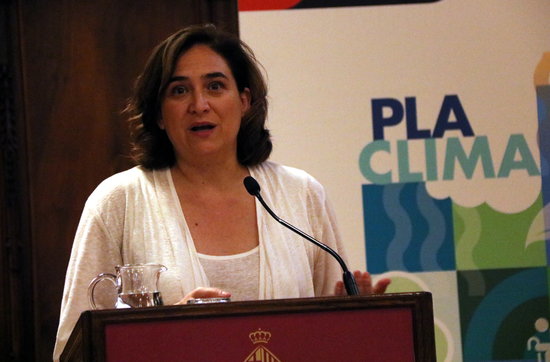Climate emergency and concrete measures: what is being done?
European Mobility Week, low emission zone and reclaiming car lanes, among environmentally-friendly proposals

Over the past few months, more and more headlines relating to environmental concerns have been making the news.
In June it was revealed that Barcelona is the city most polluted by cruises in Europe, which in 2017 polluted almost five times more sulfur oxide than all the city’s vehicles combined.
And in August, a study headed by the Barcelona Institute for Global Health concluded that one in three new childhood asthma cases is caused by air pollution, as well as that keeping to World Health Organization air quality guidelines would prevent 11% of new cases in Europe.
What is being done?
And with the environment in such a dire state – the Catalan government even declared the existence of a climate emergency in May – what exactly are some of the measures that are being put in place to counter this?
European Mobility Week
September 16 to 22 marks Mobility Week across Europe, and 300 towns and cities in Catalonia are registered to participate. 700 activities will be held focusing on the benefits of "safe walking and cycling," for the environment, health and finances. Find out what is happening near you by checking the Land and Sustainability Department’s official website.
Barcelona’s Low Emission Zone
Perhaps not much of a surprise coming from a city in which only a third of residents consider driving to be a good way to get around, from January the Catalan capital will gradually begin to implement its low emission zone – that according to the mayor is “20 times larger than Madrid Central” – restricting the circulation of highly polluting vehicles.
Barcelona’s left-wing mayor, Ada Colau, says that “starting in January, this measure will affect 50,000 highly polluting vehicles, which will no longer be able to drive through the city of Barcelona.”
The city council has also announced that it will declare a climate emergency in January when the low emission zone goes into effect.
Changes to city streets
Carrer d’Aragó is one Barcelona’s widest and busiest arteries, with a staggering 6 car lanes cutting through many of the city’s different neighborhoods.
By early next year, though, one of these 6 lanes will be turned into a bus and taxi lane, a move that hopes to reduce the number of vehicles that drive down the street every day by 6,000.
Not only will Aragó be transformed, but so will Carrer de Mallorca, another major city road. It will also see the number of car lanes reduced – though only between Meridiana and Diagonal – and what will become of that lane is yet to be decided by locals who will be consulted on the matter.
Are these measures enough?
While local and state authorities are often keen to back measures that are at least perceived to be environmentally friendly and that may or may not be positive in their own ways, critics tend to describe them as ‘greenwashing’.
Environmentalists argue that, for policies to be effective, they should also target the world’s biggest polluters, like the cruise industry, rather than only individuals who have fewer resources to alter their polluting behaviors.
More specifically, the Fridays for Future youth group has called Barcelona’s low emission zone “insufficient” and, as will be happening all over the world, is organizing a climate strike on September 27th in Barcelona as well. It has also called for a ‘pollution toll’ on all vehicles entering the city.